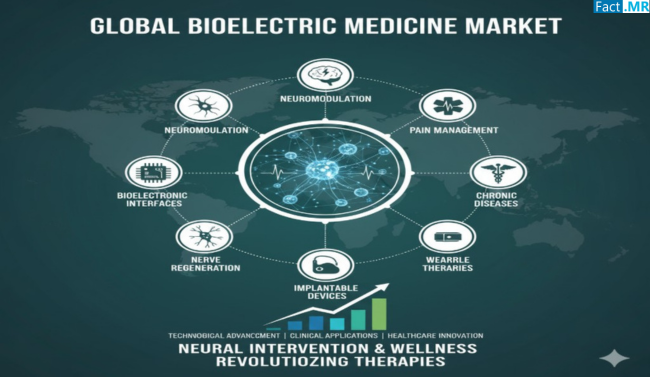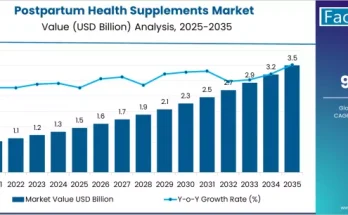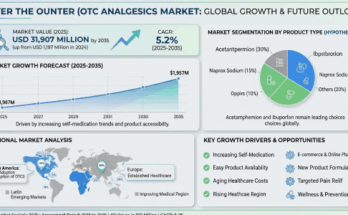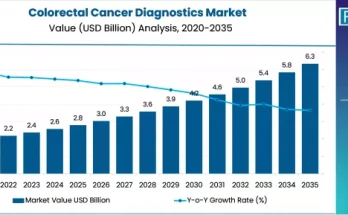Bioelectric medicine, also known as electroceuticals, is transforming the healthcare landscape by harnessing electrical signals to treat diseases. Unlike conventional pharmaceuticals, bioelectric medicine leverages neural and bioelectrical pathways to modulate body functions, offering targeted, non-invasive solutions. This innovative approach addresses conditions ranging from neurological disorders to cardiovascular diseases, providing enhanced patient outcomes and reduced side effects.
As healthcare systems evolve, the adoption of bioelectric therapies is accelerating. The market’s expansion reflects increasing awareness of alternatives to traditional treatments, ongoing research in neurostimulation, and the growing integration of digital health technologies.
Market Overview
Bioelectric medicine encompasses a broad range of devices and therapies designed to restore normal bodily functions by interacting with the nervous system. These devices generate precise electrical impulses to regulate nerve signals, thereby addressing dysfunctions in the body’s communication network.
The market growth is fueled by advancements in neuromodulation, implantable devices, and wearable technologies. Hospitals and clinics are increasingly adopting bioelectronic solutions for conditions such as chronic pain, epilepsy, heart arrhythmias, and immune-related disorders. The precision offered by bioelectric medicine reduces reliance on medications, lowers the risk of adverse effects, and enhances overall treatment efficacy.
Technological innovations, including wireless implants, AI-assisted monitoring, and minimally invasive surgical techniques, are further broadening the applicability of bioelectric devices. These developments allow for personalized, real-time interventions that improve patient recovery and satisfaction.
Regional Insights
North America leads the adoption of bioelectric medicine, driven by advanced healthcare infrastructure, strong R&D investments, and a large base of healthcare providers. The region’s focus on technological innovation in medical devices contributes to the widespread use of implantable neurostimulators and cardiac devices.
Europe follows closely, with regulatory support, aging populations, and increasing clinical trials fostering the growth of bioelectric therapies. Countries such as Germany, the U.K., and France are investing in both research and healthcare delivery to integrate electroceutical solutions across hospitals and specialty clinics.
Asia-Pacific is emerging as a key market, fueled by rising healthcare expenditure, medical tourism, and increasing awareness of advanced therapies. Nations like Japan, China, and India are adopting bioelectric medicine technologies rapidly, with government initiatives promoting innovative treatment solutions.
Key Trends & Forecast
The bioelectric medicine market is evolving with notable trends:
- Miniaturization and Smart Devices: Advanced microfabrication techniques are enabling smaller, more efficient implantable devices that can deliver targeted therapies with precision.
- Integration with Digital Health Platforms: Real-time monitoring, AI-powered analytics, and remote therapy management are enhancing patient care and treatment personalization.
- Non-Invasive Stimulation: Wearable and transcutaneous devices are gaining popularity for their reduced procedural risks and increased patient comfort.
- Expansion into New Therapeutic Areas: Research is extending bioelectric applications beyond neurological and cardiovascular conditions to areas such as immune modulation and metabolic disorders.
- Collaborative Innovation: Partnerships between medical device manufacturers, research institutions, and hospitals are driving rapid advancements and clinical adoption.
As these trends gain momentum, bioelectric medicine is expected to become an integral component of mainstream healthcare.
Applications & End-Use Outlook
Bioelectric medicine is increasingly used across multiple medical specialties:
- Neurological Disorders: Devices such as deep brain stimulators and vagus nerve stimulators are transforming treatments for epilepsy, Parkinson’s disease, and depression by restoring neural balance.
- Cardiovascular Conditions: Pacemakers, defibrillators, and cardiac neurostimulators offer life-saving interventions and improved patient quality of life.
- Pain Management and Inflammatory Diseases: Spinal cord and peripheral nerve stimulators provide alternatives to opioid treatments, reducing dependence on medications.
- Sensory Restoration: Cochlear implants and retinal prostheses help restore sensory functions, significantly enhancing patient well-being.
- Emerging Areas: Ongoing research is exploring applications in diabetes management, autoimmune disorders, and gastrointestinal conditions.
Hospitals, specialty clinics, and ambulatory centers are the primary end users, driven by the increasing demand for precision therapies, shorter hospital stays, and improved recovery rates.
Conclusion
The bioelectric medicine market represents a transformative shift in healthcare, emphasizing precision, safety, and targeted therapy. By leveraging electrical signals to modulate the body’s physiological functions, bioelectric medicine offers an innovative alternative to traditional pharmaceuticals.
With continuous advancements in technology, growing clinical adoption, and expanding therapeutic applications, the market is poised for sustained growth. As healthcare providers increasingly focus on personalized, non-invasive, and efficient treatments, bioelectric medicine is set to become a cornerstone of modern medical practice—driving better patient outcomes and redefining the future of healthcare.



